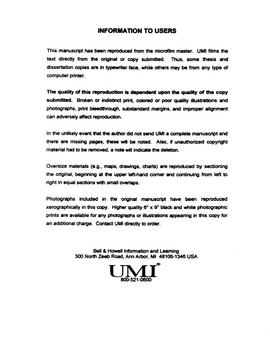| dc.contributor.advisor | Knox, Robert C., | en_US |
| dc.contributor.author | Thal, Alfred E., Jr. | en_US |
| dc.date.accessioned | 2013-08-16T12:30:47Z | |
| dc.date.available | 2013-08-16T12:30:47Z | |
| dc.date.issued | 1999 | en_US |
| dc.identifier.uri | https://hdl.handle.net/11244/5900 | |
| dc.description.abstract | The secondary objective of this research was to demonstrate the advantages of the UTCHEM simulator in developing effective design strategies for hum tests and surfactant flooding processes. During a column study, there was generally good agreement between the simulation results and the experimental data. At the field scale, simulation results were only able to illustrate general trends in the experimental data. Obtaining good agreement was not possible because of a lack of information regarding site heterogeneities and NAPL distribution. | en_US |
| dc.description.abstract | A closely related objective was to determine the composition changes in a synthetic NAPL during surfactant enhanced remediation. Composition changes would result in changes to the NAPL's EACN and affect the estimated partition coefficient determined from the previous correlation. However, composition changes during this research were negligible and the NAPL EACN remained essentially constant. During the remediation process, analysis of the effluent validated preferential solubilization. A Solubility Ratio Index (SRI) was developed which easily identified the order of preferential solubilization for the contaminants. Furthermore, a linear relationship between the SRI and aqueous solubility was discovered. | en_US |
| dc.description.abstract | Regardless of the cleanup technology selected for a contaminated site, proper characterization of subsurface nonaqueous phase liquids (NAPLs) is essential for effective remediation efforts. Since partitioning tracers are increasingly being used for characterization efforts, the primary objective of this research was to determine if a correlation existed between the distribution of a tram between water and organic solvents such that researchers could estimate partition coefficients. After validating the equivalent alkane carbon number (EACN) concept, a correlation (R2 = 0.9910) was found to exist in which there is a bilinear relationship between tracer partition coefficients and the EACNs of both the contaminant and alcohol (9 contaminants and 13 alcohols were used). The ability to estimate partition coefficients, when coupled with modeling efforts, enables the researcher to focus work on tracers possessing partitioning characteristics most suitable for a given site. | en_US |
| dc.description.abstract | In any industrial society, the production and use of liquid petroleum products and industrial solvents are widespread. Since little was known about the hazards associated with these chemicals until the 1970s, management and disposal practices were inadequate in the past and provided only minimal protection to human health and the environment. The presence of these chemicals in the subsurface, whether from improper management or poor disposal practices, poses a serious threat to groundwater systems. | en_US |
| dc.format.extent | xxiii, 330 leaves : | en_US |
| dc.subject | Partition coefficient (Chemistry) | en_US |
| dc.subject | Engineering, Environmental. | en_US |
| dc.subject | Engineering, Petroleum. | en_US |
| dc.subject | Remediation wells. | en_US |
| dc.subject | Environmental Sciences. | en_US |
| dc.subject | Alcohol. | en_US |
| dc.title | An investigation of alcohol tracer partition coefficients and a study of simulations. | en_US |
| dc.type | Thesis | en_US |
| dc.thesis.degree | Ph.D. | en_US |
| dc.thesis.degreeDiscipline | School of Civil Engineering and Environmental Science | en_US |
| dc.note | Major Adviser: Robert C. Knox. | en_US |
| dc.note | Source: Dissertation Abstracts International, Volume: 60-11, Section: B, page: 5700. | en_US |
| ou.identifier | (UMI)AAI9952417 | en_US |
| ou.group | College of Engineering::School of Civil Engineering and Environmental Science | |
